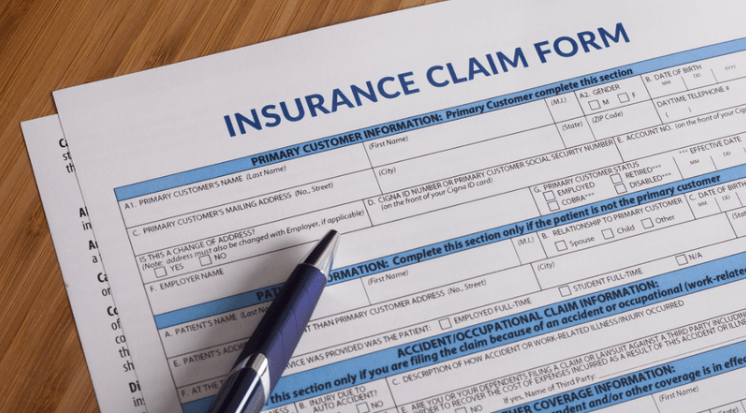insurance claims, process, guide, policy, coverage, claim filing, provider, documents, approval, settlement, policyholder, adjuster, deductible, benefits, protection, payment, denial, appeal, financial security, claim status, loss, reporting
Understanding the Insurance Claims Process
insurance claims, process, policy, coverage, protection, provider, claim filing, policyholder, financial security
The insurance claims process is the method by which policyholders access the benefits of their insurance coverage after experiencing a loss. Knowing how to file a claim properly can make the process smoother and help policyholders receive financial security during difficult times. From gathering documentation to submitting information to the provider, understanding each step of the process allows policyholders to manage their claims with confidence and avoid potential issues.
Step 1: Review Your Insurance Policy
review, insurance policy, coverage, benefits, deductible, protection, policyholder, financial security
The first step in the insurance claims process is to thoroughly review your insurance policy. Understanding the details of your coverage, including deductibles and limits, is essential for knowing what benefits you can claim. Each policy is different, so it’s crucial for policyholders to verify their eligibility for specific types of protection. This step helps prevent misunderstandings and ensures that the claim aligns with the policy’s benefits.
Step 2: Report the Loss or Incident
report, loss, incident, provider, claim filing, policyholder, insurance claims, process, protection
Once a loss or incident occurs, it’s important to report it to your insurance provider as soon as possible. This step initiates the claim filing process and notifies the provider of your intent to pursue a claim. Providing accurate details about the incident helps the insurer assess your case and determine the appropriate coverage. Policyholders should aim to report their claim promptly to avoid delays and ensure they receive protection in a timely manner.
Step 3: Gather Required Documentation
gather, documentation, insurance claims, process, provider, policyholder, documents, claim filing, benefits
Documentation is a critical component of the insurance claims process. The required documents typically include proof of loss, photographs of the damage, police reports (if applicable), and any medical or repair bills. Providing complete and accurate documentation helps expedite the claim review process and increases the likelihood of a favorable outcome. Policyholders should check with their provider to ensure they gather all necessary paperwork for a seamless claim filing experience.
Step 4: File the Claim
file the claim, claim filing, process, provider, insurance claims, documents, benefits, policyholder, coverage
To officially file the claim, policyholders must submit all documents and required information to their insurance provider. This can often be done through online portals, by phone, or in person, depending on the provider’s options. Filing the claim is the formal step that allows the insurer to begin the review process, during which they verify the details and assess the coverage available. Accurate claim filing increases the likelihood of an efficient review and quicker access to the benefits provided.
Step 5: Work with the Insurance Adjuster
work, insurance adjuster, claims process, provider, policyholder, assessment, coverage, approval, settlement
Once a claim is filed, an insurance adjuster may be assigned to evaluate the damage or loss. Adjusters assess the extent of the claim, verify the incident details, and determine the appropriate coverage level. Policyholders may need to work closely with the adjuster by providing additional information or access to inspect the property. This collaboration ensures an accurate assessment, allowing for fair settlement decisions based on the claim’s specifics.
Step 6: Review the Settlement Offer
review, settlement offer, insurance claims, provider, policyholder, benefits, coverage, financial security, payment
After the adjuster’s assessment, the insurance provider will present a settlement offer detailing the benefits and amount they are willing to cover. Policyholders should carefully review this offer to ensure it meets the coverage outlined in their policy. If the settlement offer aligns with expectations, the policyholder can accept it to move forward with payment. Reviewing the offer thoroughly protects financial security and ensures fair compensation for the claimed loss.
Step 7: Appeal a Denied Claim
appeal, denied claim, insurance claims, process, provider, policyholder, coverage, documents, protection
In some cases, a claim may be denied due to insufficient documentation, lack of coverage, or other factors. Policyholders have the right to appeal a denied claim if they believe the decision was incorrect. The appeals process typically requires additional documents or clarifications that support the policyholder’s case. Working with the provider to understand the reason for denial and providing any missing information can help reverse the decision, ensuring that the policyholder receives the protection they deserve.
Step 8: Receive Payment
receive payment, insurance claims, provider, benefits, policyholder, coverage, settlement, financial security
Once a settlement offer is accepted, the insurance provider will process the payment. This payout may be provided through a direct deposit, check, or other payment method based on the provider’s options. Receiving payment concludes the claims process, allowing policyholders to utilize the funds to cover their loss or expenses. This payment is the result of the protection and coverage promised under the policy, offering financial security to the policyholder.
FAQs on the Insurance Claims Process
1. What is the first step in filing an insurance claim?
The first step is to review your insurance policy to understand the coverage and ensure you’re eligible for specific benefits.
2. How do I gather the right documentation for my claim?
Collect essential documents like proof of loss, photographs, and receipts, and confirm with your provider for any additional requirements.
3. Who is an insurance adjuster, and what is their role?
An insurance adjuster assesses the claim’s validity and extent of loss, working with the provider to determine the appropriate coverage and settlement.
4. What should I do if my claim is denied?
If your claim is denied, you have the right to appeal. Gather any missing documentation and work with your provider to address issues.
5. When will I receive payment after a claim is approved?
Once the settlement offer is accepted, you should receive payment from the provider within a few business days, depending on the method used.



